Most of us in the fermenting world know all about kombucha, whether we’ve made it ourselves or just purchase it at our local health food store. What I’ve only recently learned is that kombucha is also great for the skin and makes a wonderful soap! This kombucha soap face bar recipe comes from a brand new book by Kelly Cable of Simple Life Mom called The Natural Soapmaking Book for Beginners. This is an awesome book that is perfect for those of you who want to learn how to make your own natural soap!
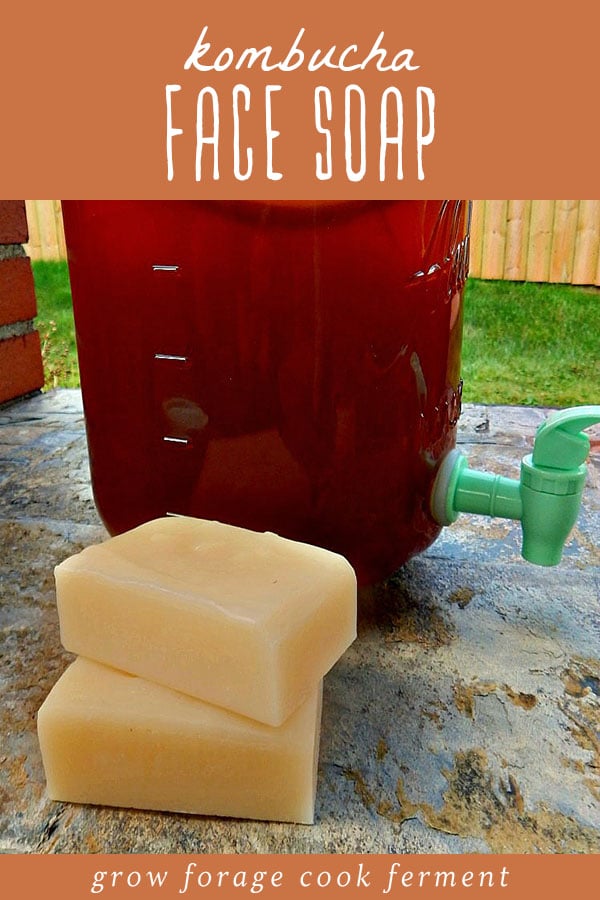
Want to save this post for later?
Kombucha Soap Recipe
Kelly says, “If you know what kombucha is, then you already know it is wonderful for the body, inside and out. Kombucha is a fermented tea that is full of probiotics and vitamins. It has more vitamin C than orange juice. Crazy thing is, those nutrients can be passed to you through soap. It’s a clean feeling soap that rinses well. It has a light natural herbal scent that I like, so I’ve left this recipe unscented. Though, feel free to add up to 1 ounce of an essential oil of your choice.”
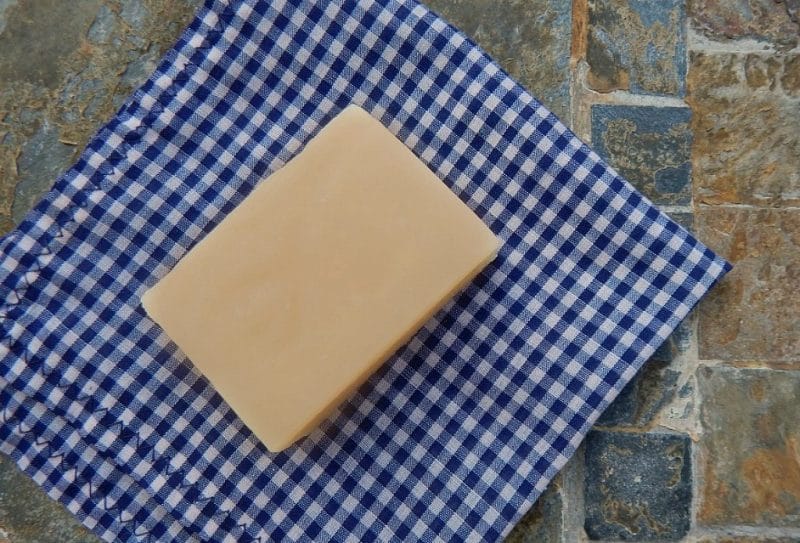
Making this kombucha face bar is also the perfect way to use up any extra kombucha that you might have sitting around after making, say, Dandelion & Fennel Kombucha or Hibiscius Kombucha.
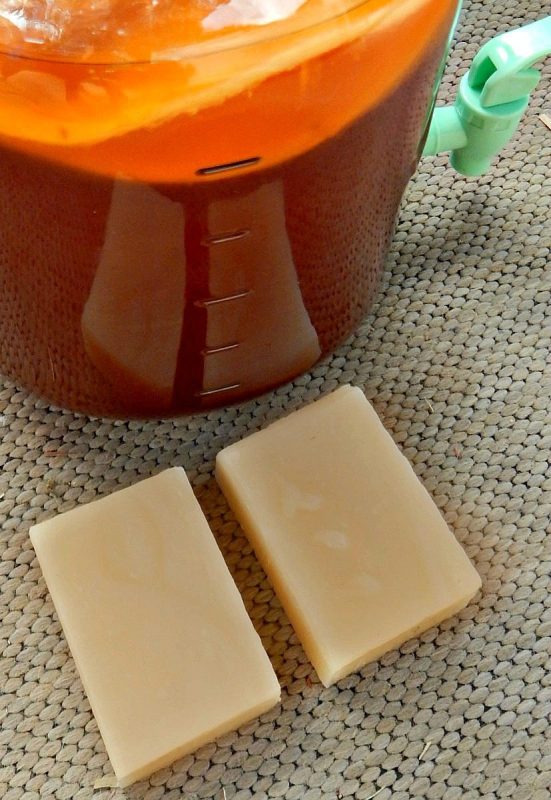
The Natural Soapmaking Book for Beginners
I love this book! It is full of great natural recipes like this kombucha soap, plus basic information on soapmaking that is geared towards beginners. All of the recipes sound wonderful, top on my list to make are Chamomile Tea Soap with Chamomile Flowers, Cederwood and Fir Soap, and Aloe and Nettle Herbal Soap. Kelly tells us how to use natural colorants and even has a super cool natural fragrance wheel!
I highly recommend The Natural Soapmaking Book for Beginners! And, for a limited time, if you order the book you’ll get a bunch of super cool bonuses as a thank you from Kelly!
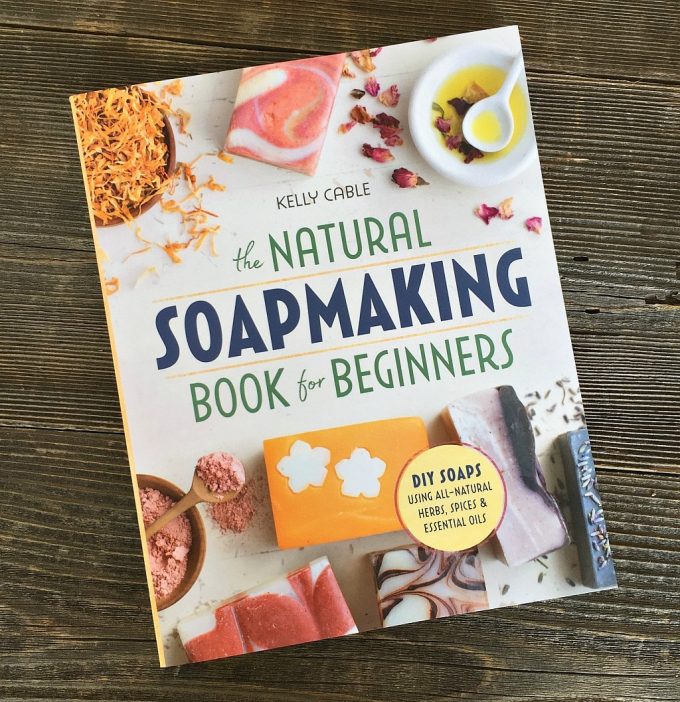
This kombucha soap, though… it’s amazing! I think you will love it.
If you want to learn more about how to make your own soap, check out my post on How to Make Soap for Beginners.
Best Kombucha Recipes
- Ginger Kombucha
- Dandelion and Fennel Kombucha
- How to Brew Jun Kombucha
- Hibiscus Kombucha
- Strawberry Kombucha
- Rose Kombucha
Natural Soap Recipes
Once you start making homemade soap, you’ll never be able to go back to store bought bar soap again. Have some fun and try these other soap recipes too!
Kombucha Soap: Natural Face Bar
Equipment
- Small Zip Top Bag
Ingredients
- 12 ounces tallow
- 8 ounces coconut oil
- 5 ounces olive oil
- 4 ounces argan oil
- 4 ounces mango butter
- 4.2 ounces lye
- 6 ounces water
- 6.5 ounces kombucha
Instructions
- Safety First! Remember to wear your safety equipment and mix the lye water outside.Tell everyone you live with that where you’re working is off limits. `Give yourself enough time to complete the recipe.
- Prep Ahead: Combine water and kombucha and chill in the refrigerator.
- Heat the Fats/Oils: In a large pot over medium-low heat, combine tallow, coconut oil, olive oil, argan oil, and mango butter. Heat until they are melted and incorporated. Remove from heat and allow to cool to 100-110°F.
- Mix the Lye-Water: Put on protective gear including a mask, gloves, and long sleeves. Outside, carefully add the lye crystals to the kombucha water and stir until dissolved. Allow to cool to 100-110°F. If oil or lye water cool at different, you can use a cold or hot water bath in the sink.
- Prepare the Mold: While the oils and lye water cool, line the mold with parchment paper.
- Combine and Bring to Trace: When both oils and lye water are around 100 to 110°F, pour the lye water into the pot of oils. Use a stick blender or hand mixer to mix for 1 to 2 minutes and then let the mixture rest for 4 to 5 minutes. Repeat mixing and resting until light trace.
- Mold the Soap: Pour the soap mixture into the mold, cover with a lid or parchment paper and insulate with a blanket for 24 hours.
- Cut and Cure: Remove soap from the mold. If it seems too soft to remove, wait another 12 to 24 hours before removing. Cut the soap into twelve 4-ounce bars. Allow the bars to cure for 4 to 6 weeks.

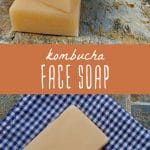
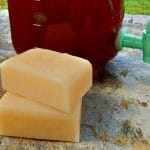

I made this recipe, as well as an entirely different olive oil soap recipe. My olive oil soap turned out beautifully, but my kombutcha soap turned out quite soft, almost crumbly, and filled with hairline cracks! Do you know why this could be? I did swap tallow for Lard, and added essential oils as my soap was coming to trace (lavender and lemon). Everything else was done according to the recipe. I know it’s not a matter of environment (humidity/dryness) because the olive oil soap I made the day before turned out great! The cracks look different than pictures I’ve seen online. The soap did not crack due to “volcano-ing”, as the bars are still flat, but they are slow to harden and the cracks all over every bar have me concerned they will not hold up. What did I do wrong?
I’m really not sure, sorry!
If you swapped oils out, you need to run it through the calculator as the amount of lye could be a different amount based on the oil SAP value. Hairline cracks in soap are a common occurrence and are usually caused by moisture fluctuations or excessive heat during the curing process. When soap is exposed to moisture and then dries, it can expand and contract, leading to cracks. The Kombucha has natural occuring sugar in it therefore it increases the heat in the soap during the saponification process. I don’t insulate my soap tightly, in a box spacious enough to allow heat to disburse away from the soap in the mold.
The kombucha gets heated and I’m wondering what benefits are then left over?
Wouldn’t the heating process of the water and lye kill all the good bacteria in the kombucha?
If you’re doing cold process, and don’t get the temp over 100° or so, the microbiom could possibly remain viable. My concern is the pH of lye would be inhospitable
I will have to try this in my hot process soap recipe! :)
Do you have a vegan friendly alternative to Tallow?
It says the kombucha and lye need to cool, but doesn’t talk about heating it, could you elaborate on this step? Thanks, I can’t wait to try it!
The addition of liquid (kombucha in this case) to lye causes a reaction that creates heat.
If I understand you correctly, what you are saying is that you can simply replace some or all of the water in any soap recipe with kombucha?
So…. If the kombucha water needs to cool, I’d assume that we’re supposed to heat it before adding the lye? What is the benefit of premixing and chilling the two ingredients?
No… The addition of liquid (kombucha in this case) to lye causes a reaction that creates heat.
Has anyone used Kombucha in a melt and pour? Too scared to make cold process without lessons.
My friend has with no problems – same idea of replacing some or all of the water with kombucha.
HI there, could you tell me if there is a replacement I could use for the Tallow?
You can replace it with lard or babassu, but you’ll need to check your lye amounts on a lye calculator by plugging the recipe in (soapcalc.net has one I love). Lard usually doesn’t change it much, but different oils will almost always change the lye requirements.
You say keep mixing and resting until a light trace. A light trace of what? I have to assume that the mix of tallow and oils is the Kambucha. Your beginning statements made it sound like the Kambucha was something else and that the recipe needed to add everything mentioned with the Kambucha.
Trace is a soapmaking term, please see my post on How to Make Soap for Beginners for more info on that. Kombucha is a fermented tea.